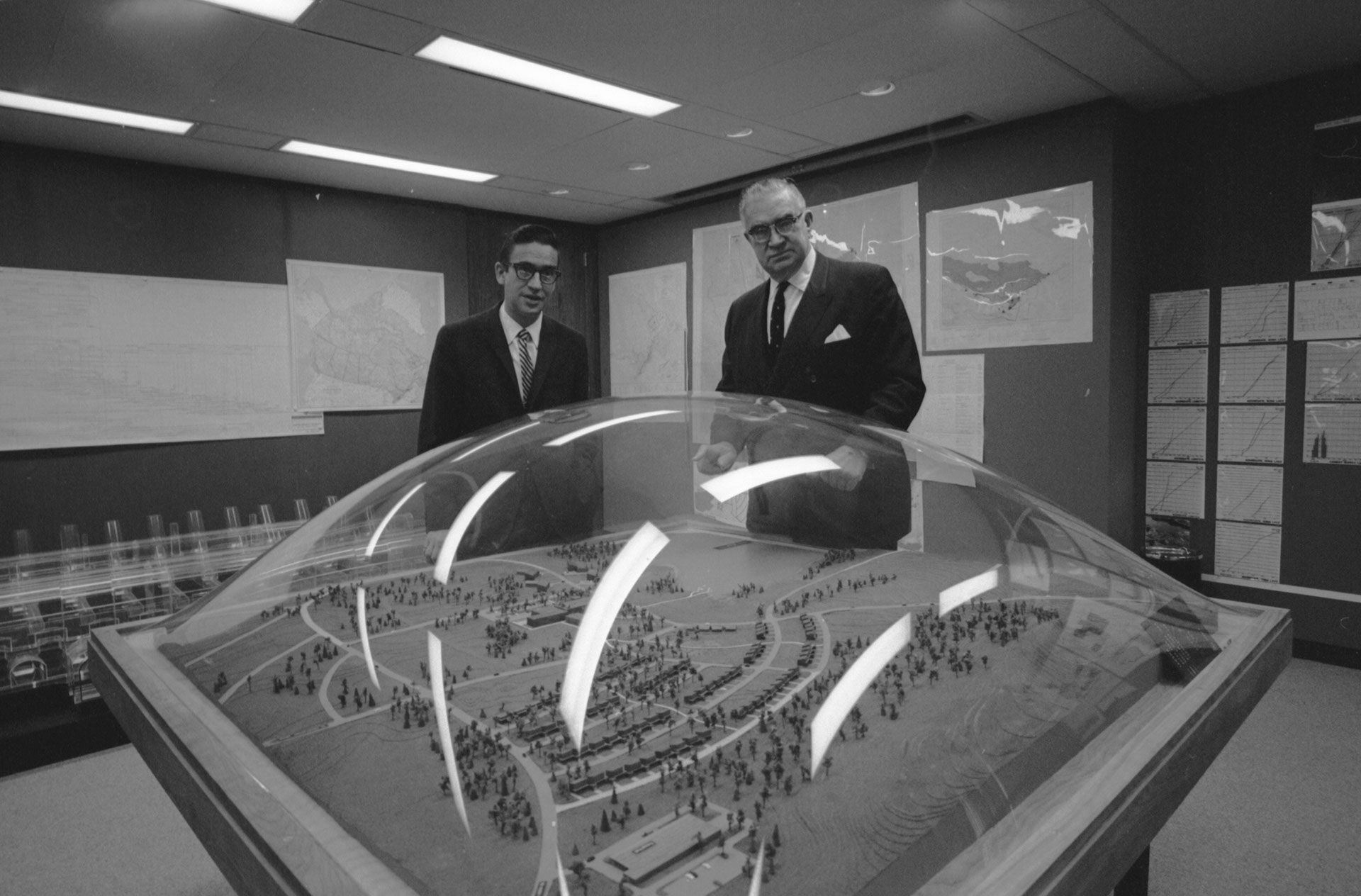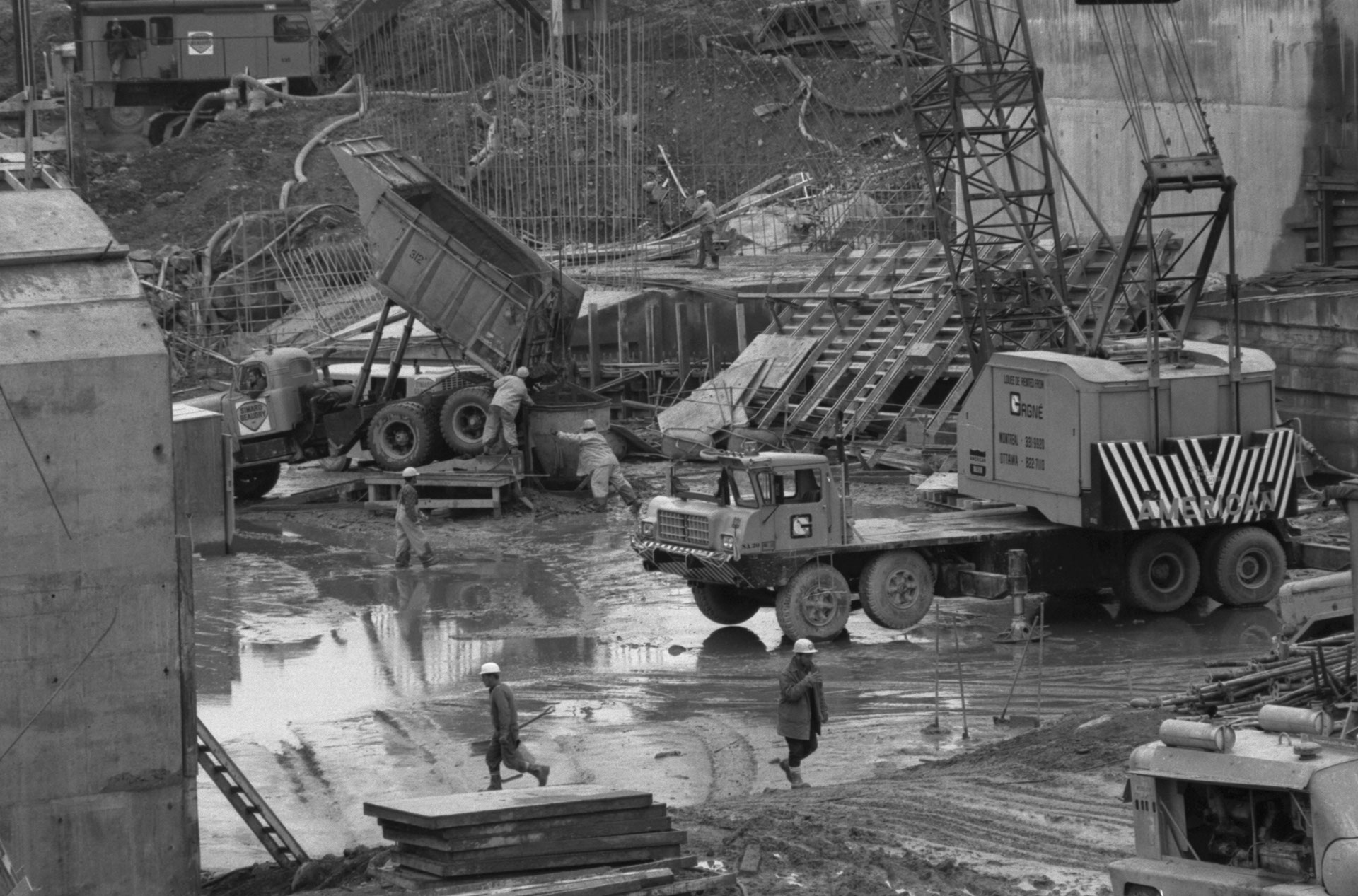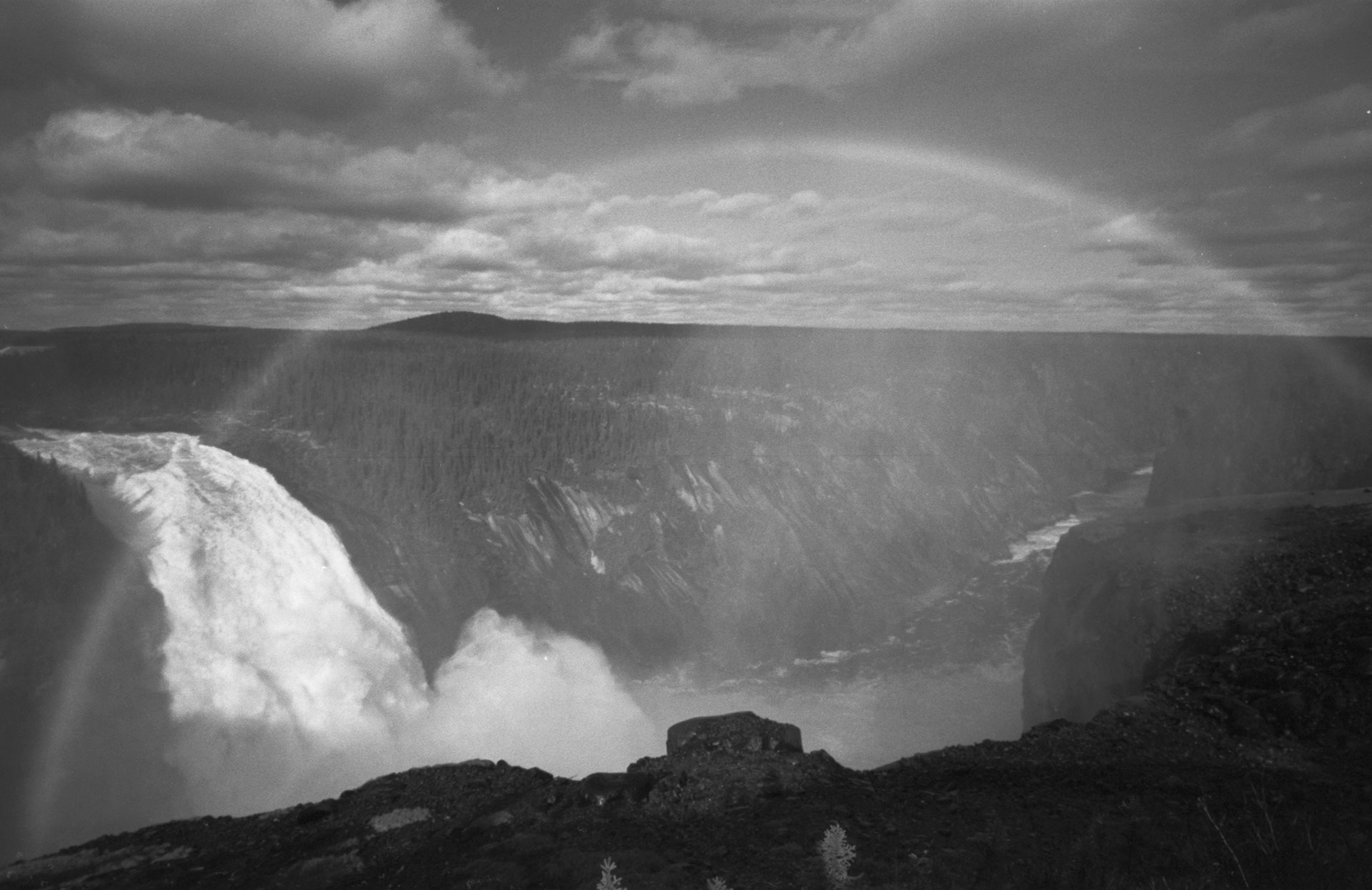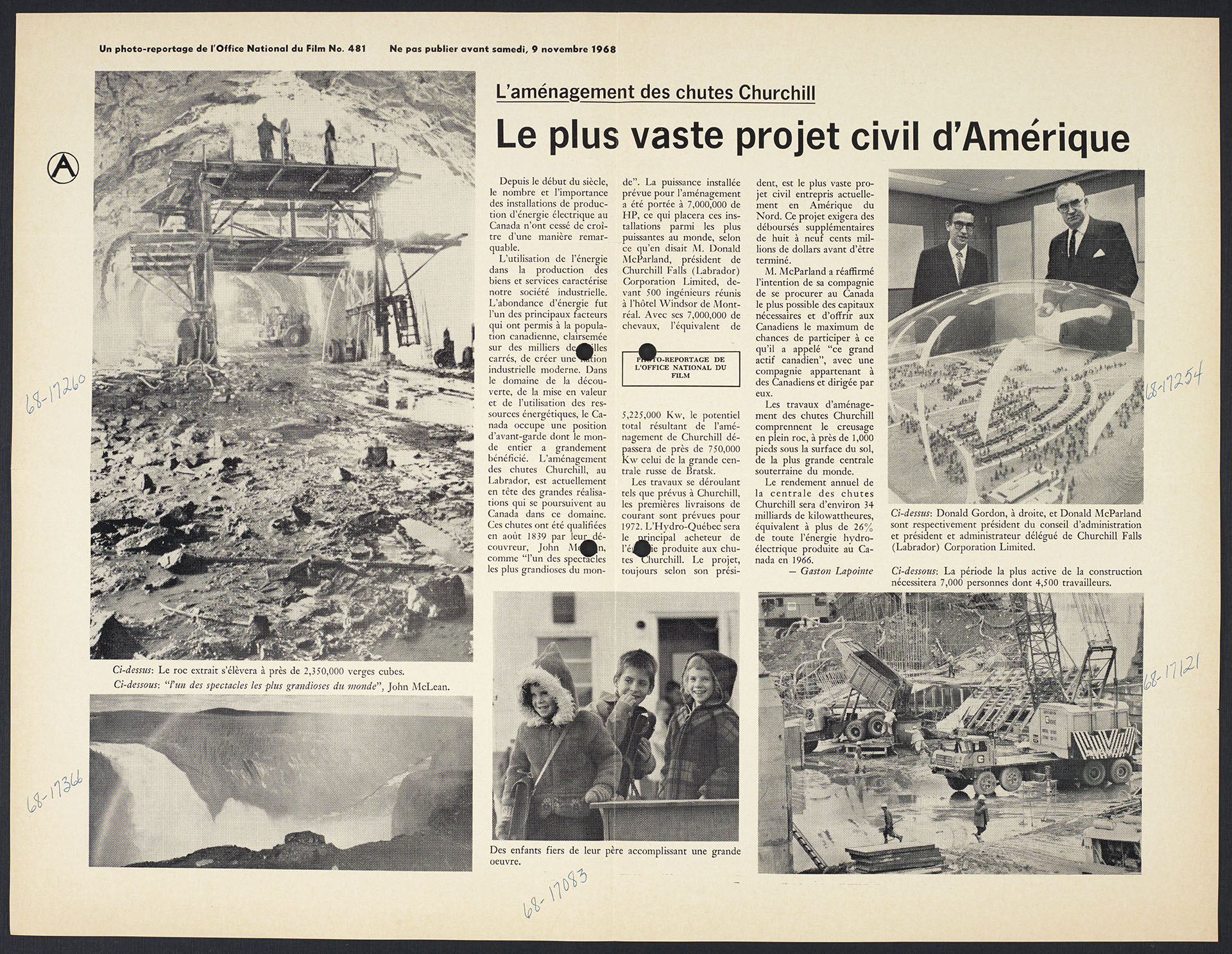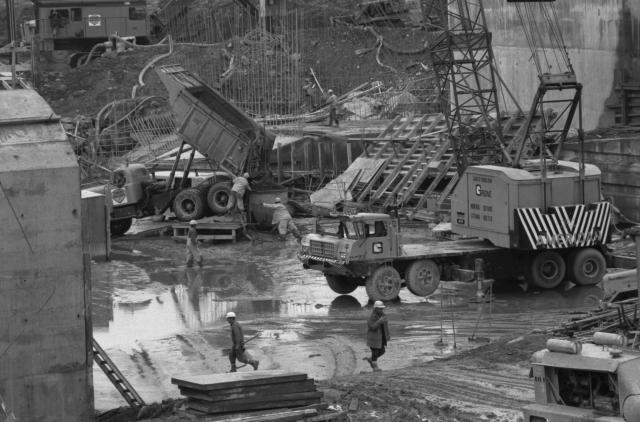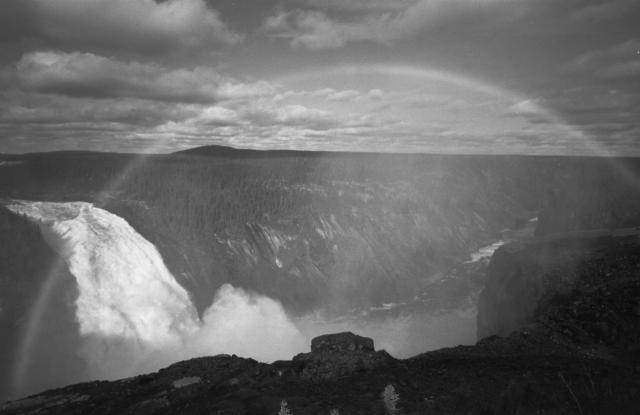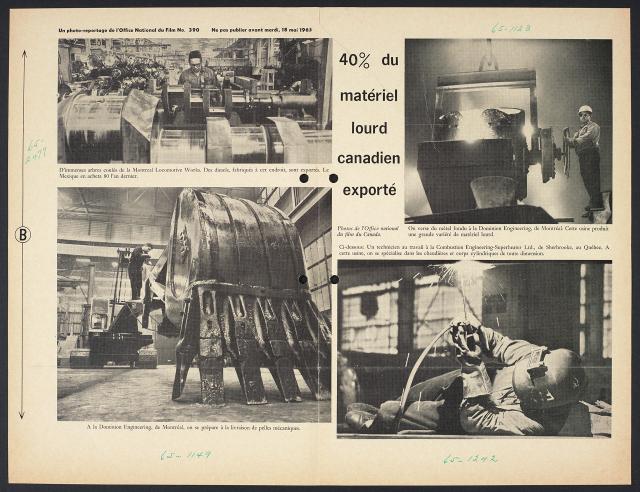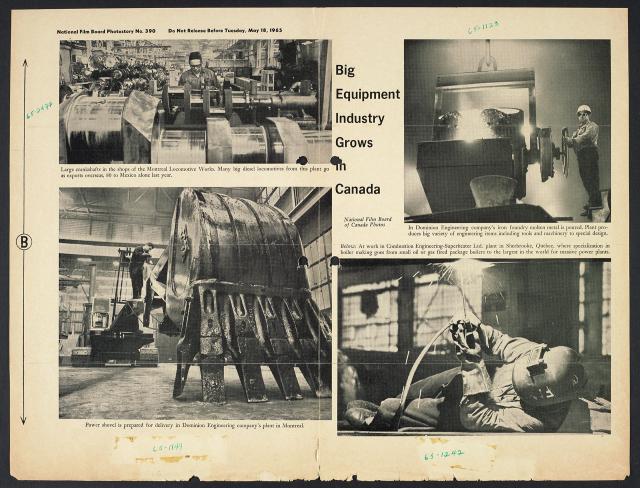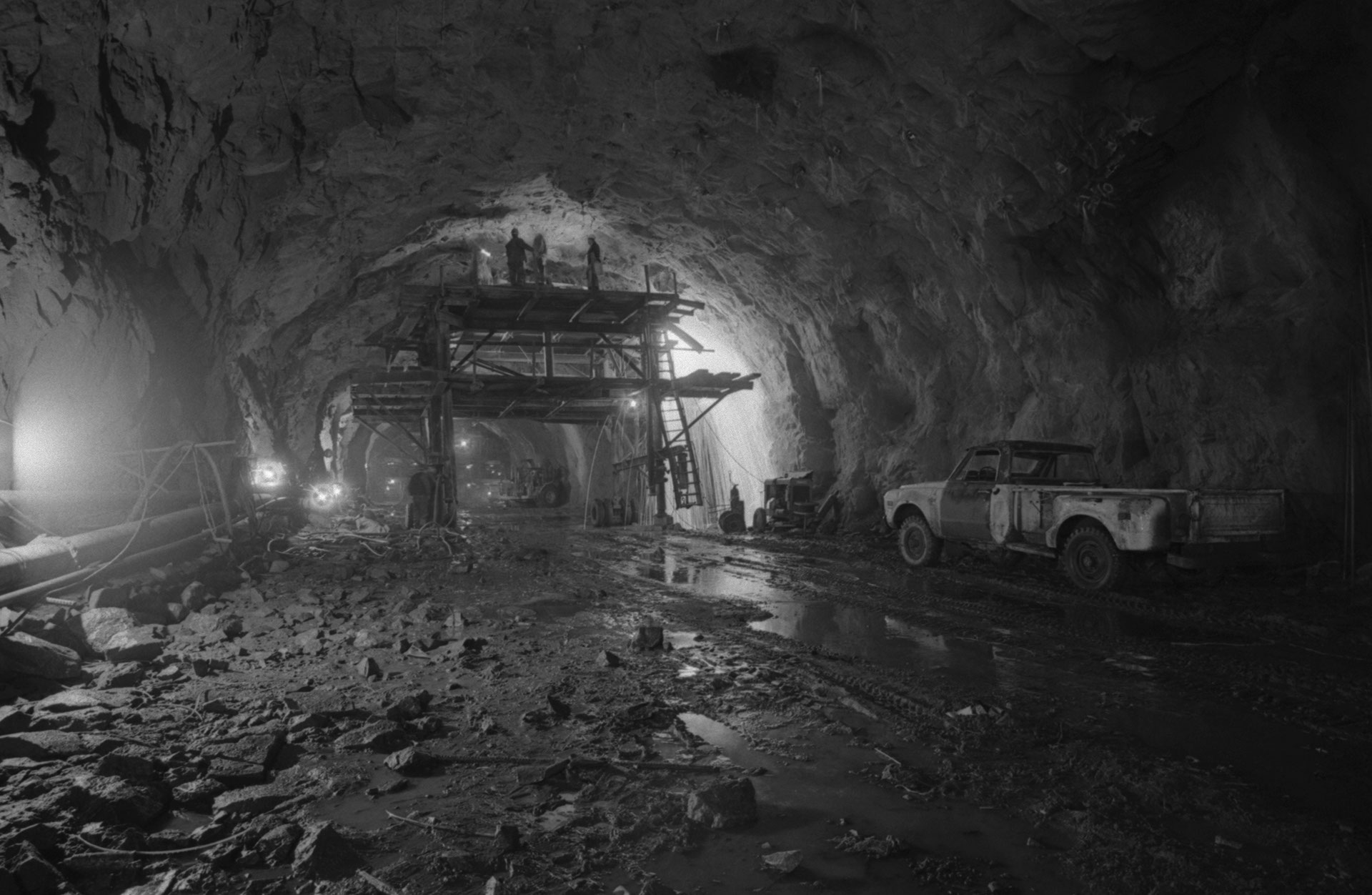
Photostory #481A: In Central Labrador Newfoundland: Giant Power-Generation Project Grows
Photographers
,
Maker
National Film Board of Canada
Release Date
November 9, 1968
Collection
CMCP fonds
Credit Line
Canadian Museum of Contemporary Photography fonds, National Gallery of Canada Library and Archives
Main Text
Even in the very early fall the wild north-easterly winds, laden with heavy wet snow, can come sweeping down from the coastal mountains. But this year with the autumnal equinox well past and the sun daily dipping lower in its southerly declination, the winds across central Labrador stood fair. For the three thousand men, busy night and day on the mammoth power project at Churchill Falls, such weather is a blessed respite between the dust and maddening flies of summer and the bitter cold soon to come. Forging ahead with the task of harnessing the region's 7,000,000 horsepower of vital electrical energy, this diversified army of men - expected to almost double next year - is at present carving three huge chambers deep in the solid granite of a hillside north of the wild Churchill River. In two of these caverns, made accessible by a mile-long horizontal tunnel and a vertical elevator shaft, will eventually be assembled eleven powerful turbines (each placed to receive the force of 10,000 tons of water per minute dropping more than 1,000 feet down the eleven steeply-inclined penstocks) and an attendant array of transformers. The remaining cavern will become the surge chamber, regulating the raging underground torrent before it pours through twin tail races to the nearby river bed a mile away. On the surface six large concrete control structures or gate dams and 40 miles of compacted dikes are being formed to impound the waters of a 27,000-square-mile catchment area and fill a 2,500-square-mile reservoir containing the potential energy stored in 1,100 billion cubic feet of water. So for now, two years after completion of the 120-mile supply road from Mile 286 of the Quebec North Shore and Labrador Railway running north from Sept Iles and the building of the main construction camp, it is a time for unrelenting attack on a complex civil-engineering campaign that will see the first electrical power generated in 1972. But before that time many amazing feats, undreamed of by most a decade ago, will become reality. A new airstrip will take over from the one now in use, a permanent townsite (complete with indoor malls, hotel and heated swimming pools) will have arisen and a mighty power line will stretch 700 miles southwest to Montreal. Churchill Falls, Labrador, is fast becoming a new source of tremendous power in Canada's resource-rich wilderness.
Subjects:
Locations:

